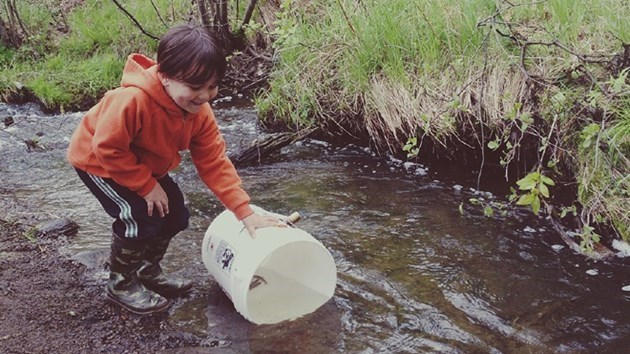Decades of regreening in Greater Sudbury have helped reduce the amount of stormwater draining in local waterways, city councillors were told last week.
In the first major update on a series of studies of the state of local watersheds, city drainage engineer Paul Javor told councillors Aug. 13 that Junction Creek has especially benefited from the new vegetation and soil that has taken root in recent decades.
“One of the most interesting results has been the effect of regreening,” Javor said.
Rather than storm runoff draining down black rock directly into the the creek, much more water being absorbed by trees and brush and soil.
“Now we see tree canopy, we see soil,” Javor said.
The key concern with the creek is flooding dangers, and a $13 million project is underway to address those fears.
Overall, the purpose of watershed studies is to come up with the best way to protect people, places and the environment, using climate change scenarios, Javor said. The studies also aim to establish policies for developers looking for “certainty” regarding what is required when they want to develop land.
“What do we need in Greater Sudbury to be sustainable?” he said, about the question that informed the studies.
In addition to seven areas along 52-kilometre Junction Creek, the studies also looked at the state of Ramsey, Whitson and Whitewater lakes using funding the city received in 2016.
“They are all in progress,” Javor said, of the studies. “None of them have been completed.”
But he wanted to update council before the studies go through public consultations before being finalized later this year or in early 2020.
For Ramsey, the main goal is to improve the infrastructure in place in key stormwater draining areas to improve the quality of the runoff, Javor said. And developers will have rules for developing on the lake that could require them to not only treat stormwater before it's released, but build management systems capable of preventing at least some of the stormwater from draining into Ramsey at all.
For the Whitewater study, the focus is on protecting the lake and ensuring it is healthy.
“It’s a key natural feature in Azilda,” Javor said.
They are proposing several projects to ensure runoff is treated before it enters Whitewater.
Ward 9 Coun. Deb McIntosh wondered whether a tree removal bylaw should be part of the process, since tree and other cover is so important in managing stormwater.
“That hasn’t been a major focus for us,” Javor said.
There are still several areas in the city that are in need of regreening, so they haven’t focused yet on protecting existing tree cover
“It’s something we should be thinking about,” McIntosh said. “We are very protective of our trees, because we remember planning director Jason Ferrigan said the idea came up for debate a few years ago.
“Council chose at the time not to pursue a bylaw,” Ferrigan said.
Staff can revisit the issue, but he said currently, developers who remove trees in areas that have been regreened have to plant new trees to replace them.
In addition to the $13 million project for Junction Creek, another $57 million in water protection projects are in the works.
